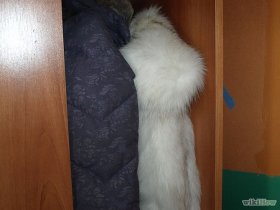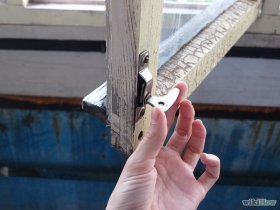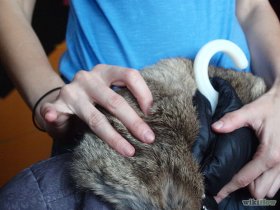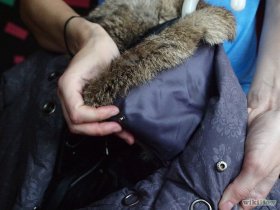
 Keep your fur in a cool, dry, dark place. When you are not wearing your fur, store it in a closet with indirect heat. If your preferred storage location has a heat vent, close the vent so that the direct heat does not dry out your furs, causing damage. Freezing and thawing cycles degrade your furs and can cause significant damage, so an unheated area would not be good.
Keep your fur in a cool, dry, dark place. When you are not wearing your fur, store it in a closet with indirect heat. If your preferred storage location has a heat vent, close the vent so that the direct heat does not dry out your furs, causing damage. Freezing and thawing cycles degrade your furs and can cause significant damage, so an unheated area would not be good.
Ad
2 Let your fur "breathe". Leave room around it for air to circulate. This will allow the moisture from your body dissipate before molds can gain a foothold.
Let your fur "breathe". Leave room around it for air to circulate. This will allow the moisture from your body dissipate before molds can gain a foothold.
Keep your fur dry. If your fur gets damp, shake it out and hang it to dry. If it gets soaked, take it to a fur shop for treatment.
4Deter or eliminate insects and rodents. Keep these pests away from your fur. Invariably, they will nibble it. Use deterrents and, if necessary, chemicals and traps to keep your storage area free of vermin.
Use deterrents and, if necessary, chemicals and traps to keep your storage area free of vermin.
Store in a controlled environment. Your furs will last longer if stored at favorable temperature and humidity. If your furs are extremely costly, consider taking them to a fur storage facility for refrigerated storage during the warm months. These facilities chill your furs to slow the unavoidable deterioration and also control the humidity to prevent mold growth. Note that air-conditioned spaces at home and standard refrigerators generally have high humidity. Try to keep storage areas around 50% relative humidity and 50˚F (10 C).
Note that air-conditioned spaces at home and standard refrigerators generally have high humidity. Try to keep storage areas around 50% relative humidity and 50˚F (10 C).
Avoid catastrophic loss. Storing your fur coats, jackets, and fur accessories at home during summer months could be very costly. To keep your fur coats and other fur apparel in top condition, they need to be stored in climate controlled, cold vaults, not in a hot, dry closet with mothballs. Home air conditioning is often too humid. You need constant 50˚F (10 C) and 50% humidity to maintain the proper moisture levels in your furs. Also, be aware that odors from cedar and mothballs stay with furs, leathers and wools, creating lasting, unpleasant odors.
YOU MIGHT ALSO LIKE










